Love at First Sight? Canon EOS R3 First Impressions
Canon’s mirrorless lineup finally has an option to compete with the likes of the 1DX-series DSLRs, and it impresses immediately out of the box. The Canon EOS R3 has the grip and weather-sealing of the 1DX series and the speed of a mirrorless camera on steroids. What’s more, it’s even got the eye control autofocus from film cameras like the EOS 7. It sits in competition with the Nikon Z9 and Sony A1 for speed, yet curiously keeps the lower resolution of Canon’s sports-focused 1DX series.
I’ve spent several hours playing with the Canon EOS R3. I’m already impressed by its autofocus capabilities, speed, vertical grip, and high ISO performance. I was blown away by how the camera performed shooting wildlife, capturing shots that I would have missed without animal detection autofocus. Of course, a $6,000 camera should be able to do more than just photograph birds. I’m still putting the camera through its paces, but so far there are several things about the R3 that get my heart racing.
Too Long, Didn’t Read
The Canon EOS R3 has impressed with fast, intelligent autofocus, speedy burst modes, and a beefy vertical grip. I’m still testing the R3 for sports and low light, but so far the R3 holds a lot of promise.
Canon EOS R3 Tech Specs
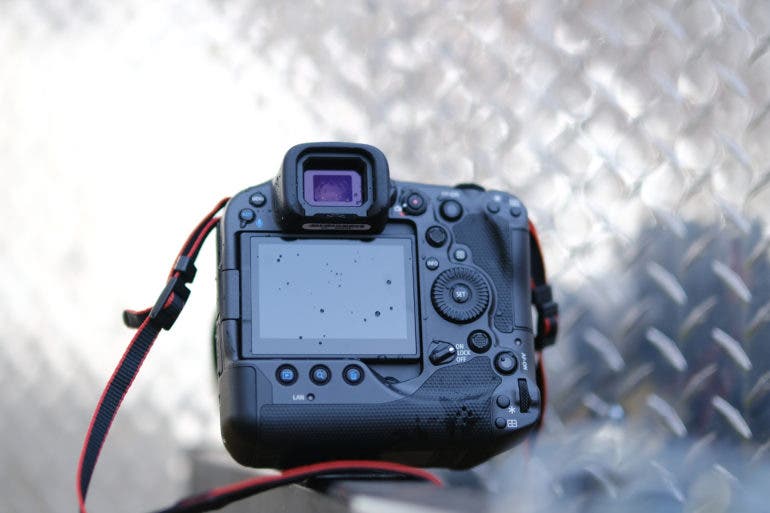
Adorama lists the following specifications for the Canon EOS R3, shortened for clarity:
- Lens Mount: Canon RF
- Sensor Type: 36 x 24mm (Full-Frame) CMOS
- Sensor Resolution: Actual: 26.7 Megapixel; Effective: 24.1 Megapixels
- Crop Factor: None
- Aspect Ratio: 1:1, 3:2, 4:3, 16:9
- Image File Format: JPEG, Raw, HEIF
- Bit Depth: 14-Bit
- Image Stabilization: Sensor-Shift, 5-Axis
- ISO Sensitivity: Auto, 100 to 102400 (Extended: 50 to 204800)
- Shutter Speed:
- Mechanical Shutter: 1/8000 to 30 Second, Bulb Mode
- Electronic Shutter: 1/64000 to 30 Second in Manual Mode; 1/64000 to 30 Second in Shutter Priority Mode; 1/8000 to 30 Second in Aperture Priority Mode; 1/8000 to 30 Second; in Program Mode; Bulb Mode
- Metering Method: Center-Weighted Average, Evaluative, Partial, Spot
- Exposure Modes: Aperture Priority, Manual, Program, Shutter Priority
- Exposure Compensation: -3 to +3 EV (1/3, 1/2 EV Steps)
- Metering Range: -3 to 20 EV
- White Balance: Auto, Cloudy, Color Temperature, Custom, Daylight, Flash, Fluorescent (White), Shade, Tungsten
- Continuous Shooting
- Electronic Shutter: Up to 30 fps at 24.1 MP for up to 150 Frames (Raw) / 540 Frames (JPEG)
- Mechanical Shutter: Up to 12 fps at 24.1 MP for up to 1000 Frames (Raw) / 1000 Frames (JPEG)
- Interval Recording: Yes
- Self-Timer: 2/10-Second Delay
- Video Recording Modes
- Raw 12-Bit up to 6K 3:2
- Vidoe Recording Limit: Unlimited
- Focus Mode: Continuous-Servo AF (C), Manual Focus (M), Single-Servo AF (S)
- Autofocus Points: Phase Detection: 1053
- Autofocus Sensitivity: -7.5 to +20 EV
- Viewfinder Type: Electronic (OLED)
- Viewfinder Resolution: 5,760,000 Dot
- Viewfinder Eye Point: 23mm
- Viewfinder Magnification: Approx. 0.76x
- LCD: 3.2″ (8.1cm), 4,150,000 Dot, Articulating Touchscreen LCD
- Built-In Flash: No
- Maximum Sync Speed: 1/250 Second
- Media/Memory Card Slot
- Slot 1: CFexpress Type B
- Slot 2: SD/SDHC/SDXC (UHS-II)
- Connectivity: USB Type-C (USB 3.1), HDMI D (Micro), 3.5mm Headphone, 3.5mm Microphone, RJ45, PC Sync Socket, Wireless, Bluetooth, Wi-Fi, GPS
- Operating Temperature: 32 to 104 Degree F (0 to 40 Degree C)
- Operating Humidity: 0 to 85%
- Battery: 1x LP-E19 Rechargeable Lithium-Ion, 10.8 VDC, 2700 mAh or 1x LP-E4N Rechargeable Lithium-Ion, 11.1 VDC, 2450 mAh
- Dimensions (W x H x D): 5.9 x 5.6 x 3.4″ (150 x 142.6 x 87.2mm)
- Weight: Body Only: 1.8 lbs. (822g); Body with Battery and Memory: 2.2 lbs (1015g)
Ergonomics

With a built-in battery grip, the Canon EOS R3 isn’t the type of mirrorless that sways photographers because of its small size. It is, however, about 35 percent lighter than the Canon EOS 1DX Mark III, weighing 28.8 ounces (1.8 pounds). Like the R6, it’s a mirrorless camera that still feels ergonomically as comfortable to grab as a DSLR, just a bit lighter. Despite the weight, I took this camera and the RF 70-200mm f4 on a three-mile hike and didn’t feel weighed down by the large size.
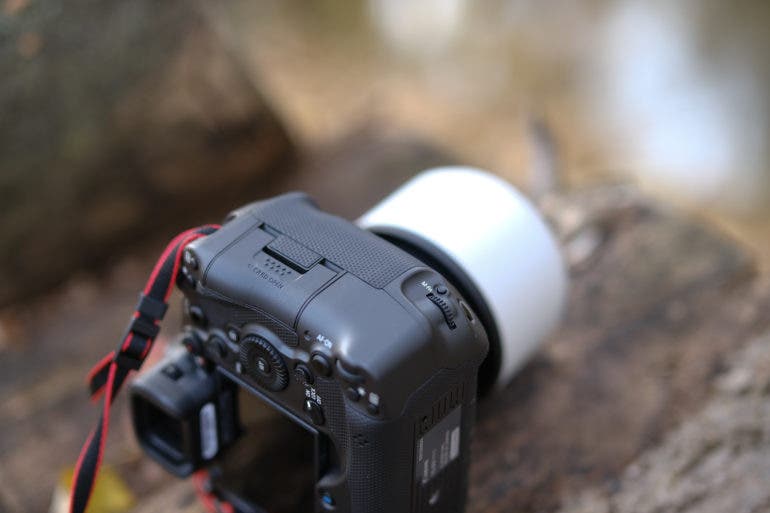
That larger size allows room for a second set of controls to use when holding the camera vertically. The shutter, front and rear dials, M-Fn button, AF on, AF joystick, AF area mode, and star controls are duplicated on both grips. The vertical grip is a bit shallower than the standard grip but still comfortable. The position of the viewfinder also means my hands are higher than my eyes when shooting in this position.
Besides the size, there are several ergonomic changes from models like the EOS R6. The top of the camera gains an extra screen that displays different settings. You can use that top screen for changing settings with the camera at waist level.
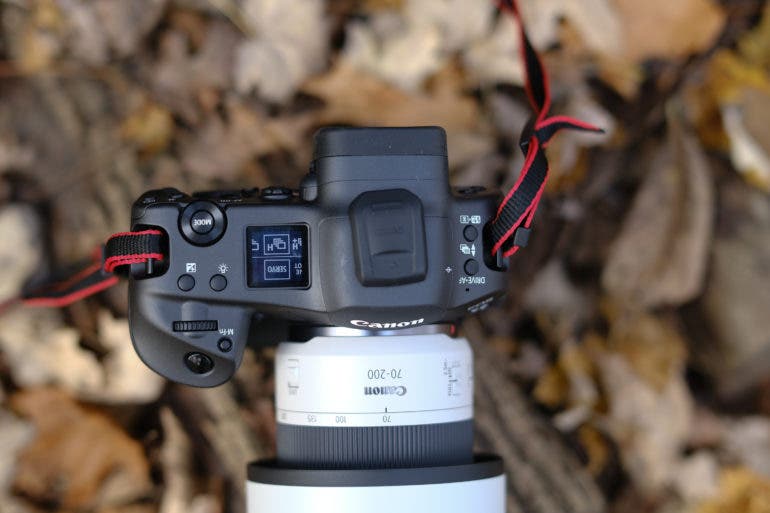
The top also lacks the mode dial and instead has a mode button inside the rear dial. Tap the mode button, and cycle through the modes using that top screen or the back LCD. North of that mode button, Canon added a light to backlight the top screen and the menu buttons. I love this feature but wish more buttons lit up. It sits next to an exposure compensation button that is just underneath the shutter, front dial, and M-Fn buttons. On the opposite side of the viewfinder bump, there’s a drive AF and a flash compensation and metering button. Each of those buttons has two settings assigned to it. Press the button, then the two options pop up on the top screen, with the front control wheel adjusting the top settings and the back adjusting the bottom. This is a clever way to fit twice the amount of options in a single button.

The back of the R3 has more in common with the R6, but still, there are a few deviations outside of that vertical grip. Instead of a record button at the top, there’s a toggle near the viewfinder to switch from photo to video mode, surrounding a record button. The playback controls are under the screen instead of on the bottom right. Without the on/off switch at the top, there’s one underneath the rear menu controls. It has a lock option, but it is a bit stiff and hard to switch sometimes.
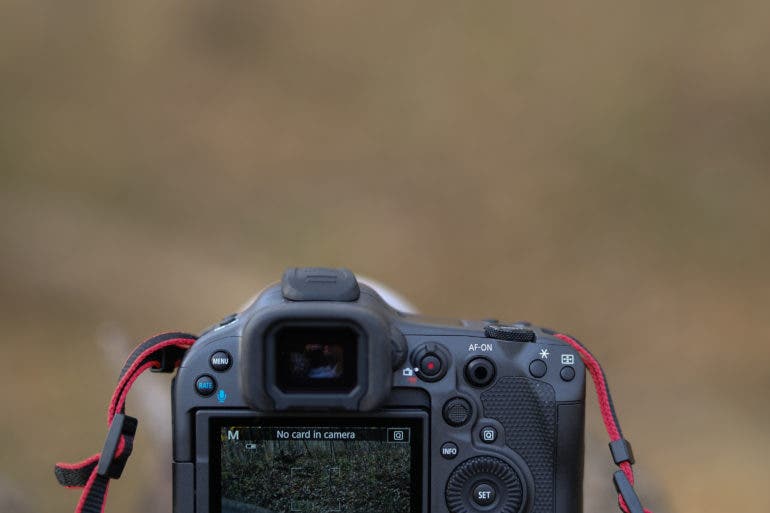
The AF-On button the R3 has what Canon is dubbing the Smart Controller. There’s a sensor embedded in the button. Photographers using back button focusing can drag their finger across it to jump to different AF points. This worked for me sometimes; the first slide over generally moved the point, but a subsequent slide didn’t often move the points back the other way. I preferred using the R3’s joystick, but I also typically don’t use back button focus.

The front of the camera has two sets of function buttons around the lens that can be customized to different controls.

The right-hand side of the camera houses the memory card door, with a slot for CF Express Type B card and a second slot for an SD card. The opposite side houses the ports, such as the mic headphones, USB Type C, HDMI, Ethernet, and a flash cable. Underneath the ports is where the extra-large battery slides in. There’s no door here; the battery itself has this section of the camera’s exterior built-in. That leaves no ports or doors on the bottom, though a quick release plate can still be problematic with the vertical grip.

Build Quality
The Canon EOS R3 feels like its price tag. It’s a hefty, but sturdy camera. The dials and buttons feel great. The on/off toggle is sometimes tough to turn; it works better if you place your finger at the tail end of the switch instead of at the front, next to the on/off label.

The R3 is weather-sealed to the same standards as the EOS 1DX series. I haven’t shot with this camera in a downpour yet, but I did get a light mist and a few snowflakes on my first hike out with this camera. I also gave it a good splash from the sink, to no ill effects. The R3’s shutter closes when the camera is powered off to help protect the sensor during lens changes.
Autofocus

Most Eye AF systems need the eye to be a good size in order to detect it and not the face. These systems also tend to work best with contrast and struggle with tasks like focusing on the brown eyes of a brown dog. That’s not so with everything that I’ve experienced from the Canon EOS R3 so far. I was dumbfounded when the animal eye AF managed to lock on the tiny, black eye of a black-capped chickadee. That’s a tiny black eye on black feathers, but the R3 did an exceptional job of finding and tracking it. When the animal’s face disappeared, it even focused on another part of the animal, then jumped back to the face once it picked its head up. This was also a huge help for animals partially covered with brush, but most of the animal’s face needs to be visible for it to work in this scenario.

The autofocus on the R3 probably led to at least five times more focused wildlife shots than a camera without animal detection. You still need the patience and skills of a wildlife photographer. But, there were several instances where I would have missed the shot if I had to move the autofocus point over to the bird before it leapt back off the branch. It makes wildlife photography easier, but not quite so easy that anyone can do it. It grabbed onto cranes flying in sky after I heard their calls, but missed on a pair of quick-flying ducks that I hadn’t anticipated.
I’m planning to test the R3 with sports and low light portraits next, so it’s a little early for a definitive opinion on the R3’s autofocus. But, so far, color me impressed. Not that I’m terribly surprised after what I’ve seen from the R6. Canon says the R3 focuses down to -7.5 EV. When shooting wildlife, the lowest I underexposed the scene to is around -3 EV. Even then, the Canon EOS R3 performed admirably. I’ve had a lot of problems nailing the eye with a few other cameras, but this did very well. I have yet to give the R3 a thorough low light test, but it did manage to lock on to a few items in the back of a dark closet.
Ease of Use

Of course, I’d be remiss if I didn’t mention the Eye Control AF. A feature in some film cameras, the R3 is the first digital EOS that can detect where you are looking and move the autofocus point there. The feature is calibrated to the photographer’s eye. And, because things like ambient lighting and the orientation of the camera can affect how the sensor reads your eye, the more it’s calibrated, the more accurate it gets.
To look at a part of the photo and immediately have the autofocus points move there is, in a word, wild. This is much faster than using the joystick. There’s less of a difference when relying on the face or animal detection, though I anticipate it being helpful to determine which face to focus on.
I wear glasses, and the Eye Control AF did a pretty good job of going straight to the object I was looking at. If I stared at the same object for a few seconds, the point did have a tendency to drift. So, I can’t see the feature being very helpful for moving the autofocus point and keeping it there. Sometimes, the point didn’t want to go all the way to the edge of the frame. But, after toying with it for a few minutes, I could see some scenarios in which Eye Detect would be hugely helpful. I will be putting Eye Detect through more rigorous tests in my upcoming sports shoots.
The R3 also has different focus modes than previous cameras like the R6. There’s no face detection + tracking mode. Face detection and tracking is available in any mode. To turn tracking on and off, while in the Quick menu selecting an AF area mode, hit the info button. (It can also be turned on and off in the menu). Similarly, the AF Priority mode doesn’t turn off detection for certain subjects, it just tells the camera what’s most important. If you are in animal AF priority, for example, it’s going to focus on the dog even when there’s a person in the frame. If there’s no dog in the frame, it will then look for a person. It also has vehicle detection, which is trained more for race cars and motorsports rather than a minivan, for example.
The R3 has a 30 fps burst rate with the electronic shutter and a 12 fps burst with the mechanical shutter. That’s both good and bad. Good, because you up the odds of getting that perfectly timed shot. Bad, because you’re going to fill up a hard drive quickly with such a fast burst, though less so than with higher megapixel cameras.
With 5-axis sensor-shift stabilization, I didn’t have issues hand-holding the R3 with the 70-200mm f4 lens. I will test this further with my low-light shoots.
Owners of previous Canon cameras will have to relearn where a few controls are, but I didn’t find it terrible to move from the R6 to the R3. The menu is similar, with a few additions. As an advanced camera, it’s one that begs to be explored. Beginners may struggle with this camera, but a $6K camera isn’t geared towards beginners.
Image Samples

The Canon R3 doesn’t have that holy-megapixels-Batman headline-grabbing spec sheet. It’s a 24.1-megapixel sensor that makes it look like Canon isn’t even trying to win the megapixel race against the Sony a1 and Nikon Z9. But, we’ve said it before — megapixels aren’t everything. The sensor is designed by Canon. Noise at ISO 6400 can be edited to non-distracting even at 100 percent. I’d share an ISO 160,000 photo on Instagram.
The autofocus on the R3 leads to some impressively sharp shots. It doesn’t have the detail or cropability of a 50 megapixel sensor, but the images are still very sharp. The colors also feel very much like Canon colors. Take a look:
Edited

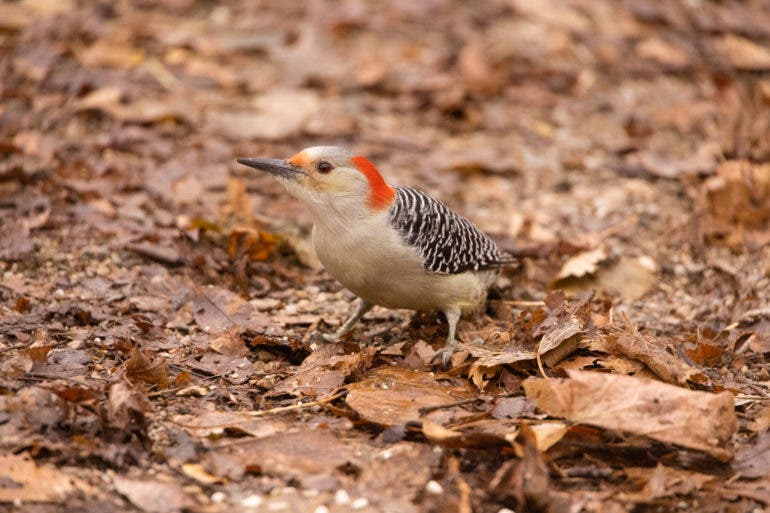



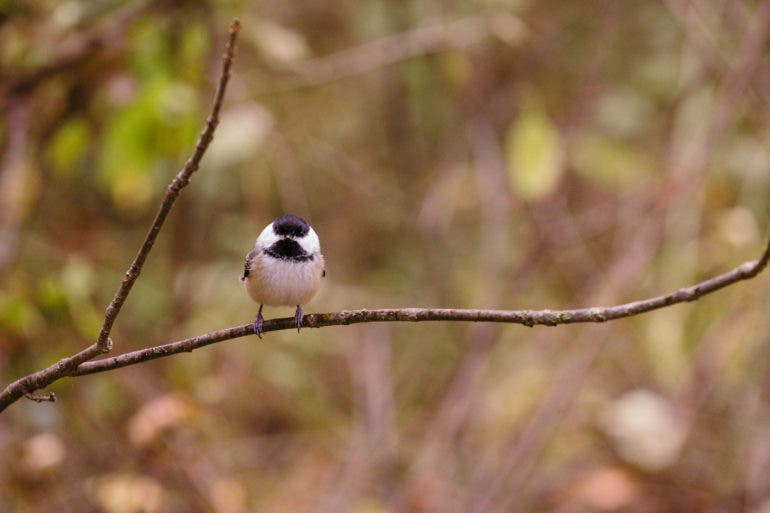

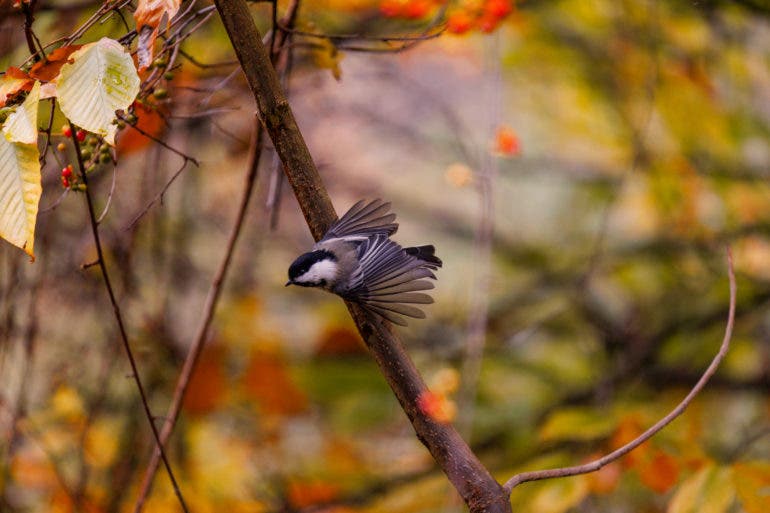


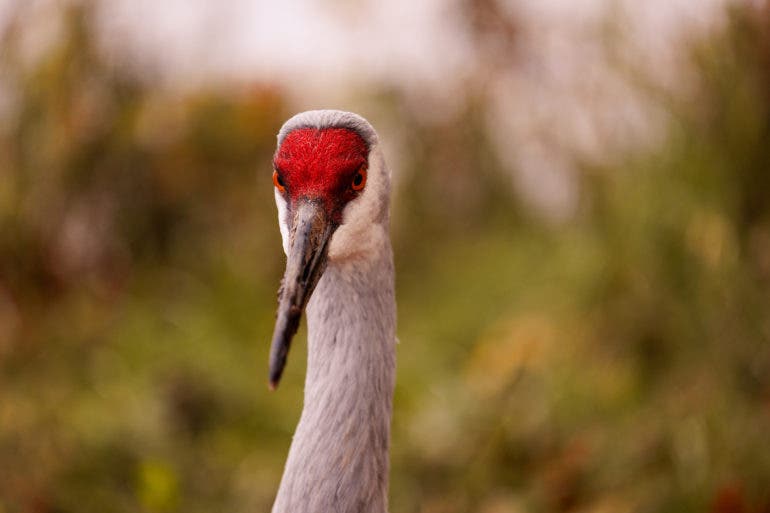


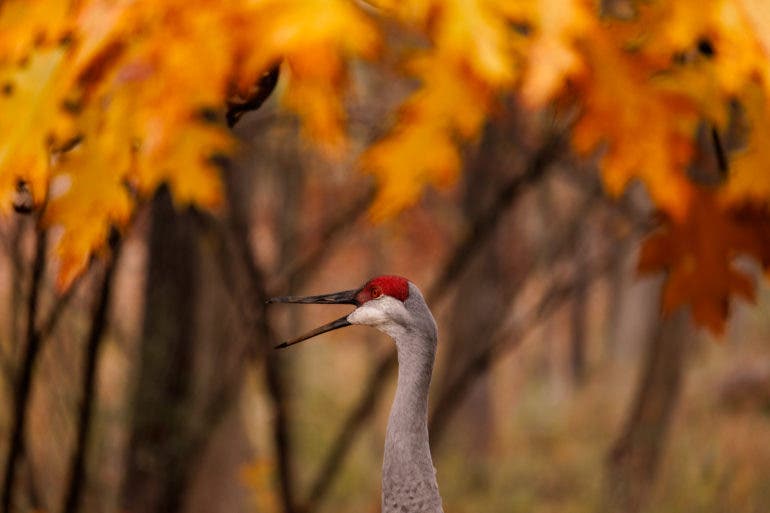

Unedited
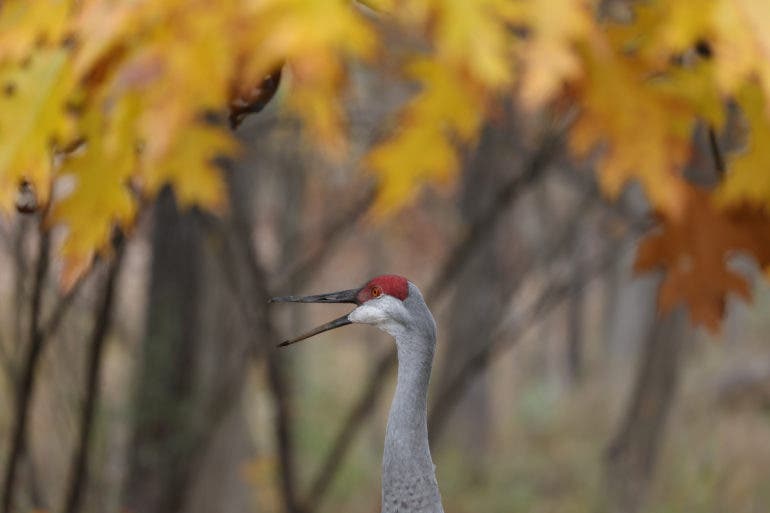


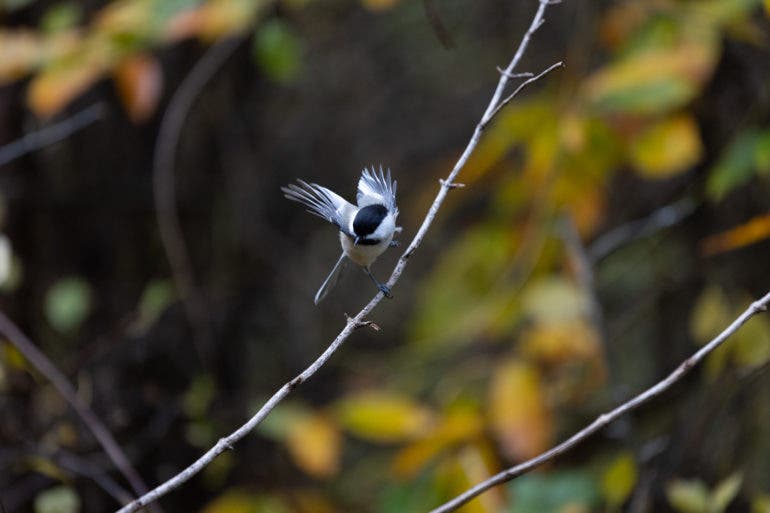

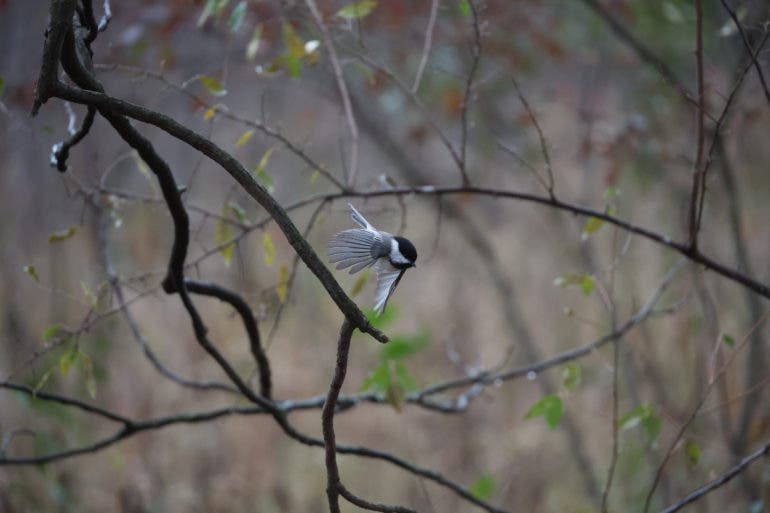


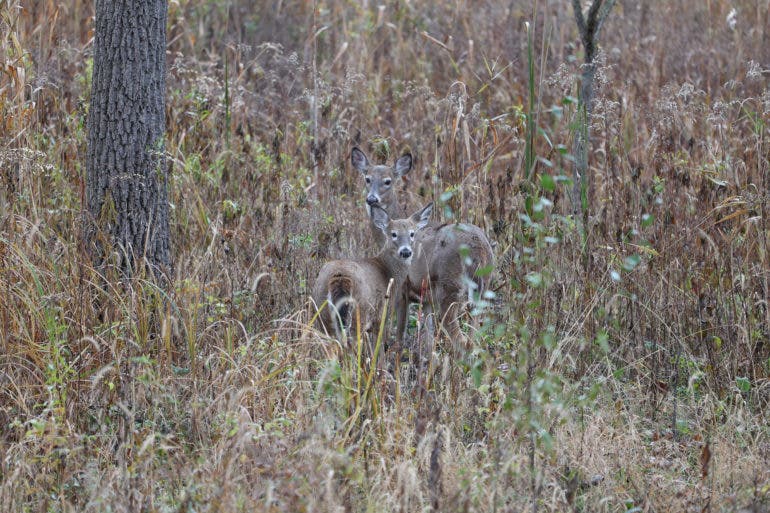
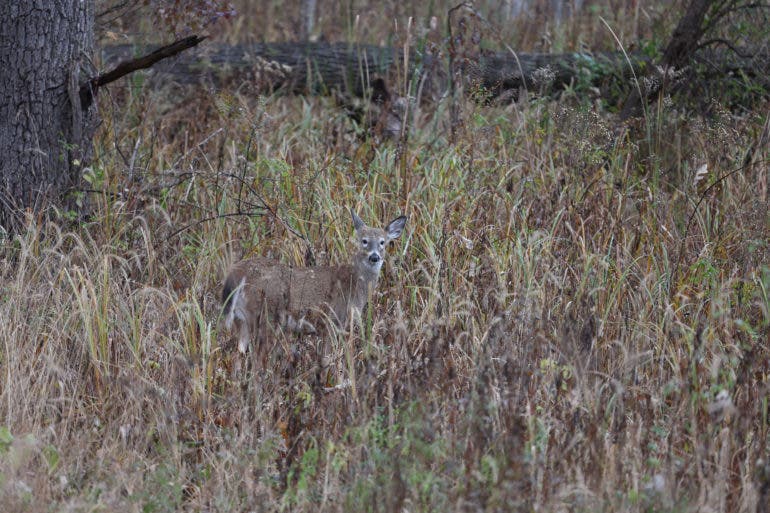
First Impressions
Canon has brought the EOS 1DX series over to mirrorless, and tossed in a lot of mirrorless first features. I’ve only spent a few hours with the camera, but I was blown away by the autofocus and the way the camera could quickly find even a tiny bird eye. Add in a fast burst rate that still has the option of a mechanical shutter, and the option to focus where you look, and there’s a lot of potential here.
It’s not trying to win the megapixel race, which could be a sticking point for some photographers. It’s thankfully priced lower than the EOS 1D X, but more than the higher resolution Nikon Z9. The colors and noise reduction have so far been very nice. The body of the R3 is big and there are a few big design changes. But, I like the second screen at the top and I love the backlit buttons.
I need to spend more time with the R3 to really figure out what makes this camera tick. But, my first hike with this beast of a camera has set my exceptions high.